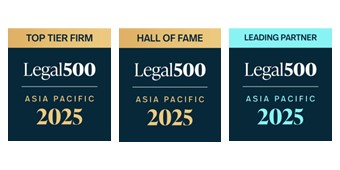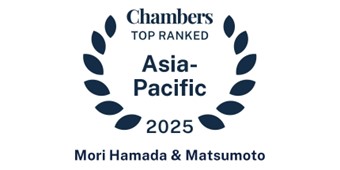I. Executive Summary
Japan continues to advance regulatory and institutional reforms in the so-called "Special Zones” to facilitate the implementation of cutting-edge mobility services. Recent projects in Tsukuba City and Kumamoto Prefecture have focused on (i) increasing speed limits for personal mobility devices through digital safety measures, (ii) evaluating the impact of autonomous buses on surrounding traffic, and (iii) introducing flexible public transport fare systems to alleviate congestion. These initiatives underscore the importance of evidence-based safety verification, social acceptance, and regulatory adjustments. This newsletter provides an overview of the latest regulatory developments and experimental results in Japan’s "Special Zones.”
II. Introduction
The Cabinet Office of Japan is working to implement regulatory and institutional reforms necessary for the implementation of advanced services in “Super Cities” and “Digital Rural Health Special Zones,” which are designated as National Strategic Special Zones.
In April 2022, Tsukuba City (Ibaraki Prefecture), Osaka City and Osaka Prefecture were designated as "Super Cities.” These zones are intended to serve as testbeds in integrating digital technology and regulatory reform to address regional challenges and realize a future society.
This newsletter introduces the mobility-related projects implemented in Tsukuba City, a "Super City,” and Kumamoto Prefecture, a "Collaboration ‘Bond’ Special Zone,” based on the "Summary of the Survey Results on the Development and Establishment of Advanced Services and Regulatory and Institutional Reforms for Fiscal Year 2024” compiled by Cabinet Office's Office for the Promotion of Regional Revitalization.
III. Overview of Mobility-Related Research Projects
1. Safety Verification of Digital Substitutes for On-Site Safety Personnel in Raising Maximum Speed Limits for Personal Mobility Devices
(a) Purpose and Overview
In Tsukuba City, demonstration experiments were conducted to verify the safety of digital substitutes for on-site safety personnel, with the aim of relaxing regulations and raising the maximum speed limit for personal mobility devices (including small mobility vehicles ("SMVs”) and powered vehicles for persons with disabilities ("PVPWDs”)) to 10 km/h.
(b) Current Legal Framework
Under the Road Traffic Act (the "RTA”), SMVs and PVPWDs are classified as "pedestrians” if their maximum speed does not exceed 6 km/h. Therefore, mobility support robots with a maximum speed of 10 km/h are not considered “pedestrians” and require road use approval from the chief of the local police station.
The National Police Agency (the "NPA”) issued a directive entitled "Regarding the Handling of Public Road Demonstration Experiments for Mobility Support Robots", which sets forth the "Standards for the Handling of Road Use Permits for Public Road Demonstration Experiments, etc. Involving Mobility Support Robots". These standards include requirements, such as the deployment of on-site safety personnel and specific conditions for locations where the maximum speed exceeds 6 km/h.
(c) Details of the Demonstration Experiment
Preliminary Demonstration (September–November 2024, within the University of Tsukuba campus):
The experiment utilized a Global Navigation Satellite System ("GNSS”) and Light Detection and Ranging ("LiDAR”) as digital substitutes for on-site safety personnel. GNSS was used to detect entry into pre-designated speed-restricted zones, automatically reducing the speed to 6 km/h and alerting the rider via audio signals.
LiDAR was used in two stages:
First Stage: The mobility device automatically decelerated and stopped if a pedestrian or object was detected within 7 meters ahead or 2 meters to either side, but excessive detection caused impractical frequent stops.
Second Stage: The device decelerated to 6 km/h if a pedestrian or object entered the range, stopping if within 3 meters ahead or 0.5 meters to either side.The preliminary demonstration confirmed GNSS functioned properly, but LiDAR’s first stage was excluded from the main demonstration due to impractical stops.
Main Demonstration (March 2025):
With 40 monitors, the main demonstration confirmed the overall safety of GNSS and LiDAR’s second stage. The GNSS operated smoothly, while LiDAR’s second stage revealed challenges with angled pedestrian approaches. 60% of respondents found the vehicle reassuring and safe, while 30% felt it was safe but occasionally alarming.
(d) Results
The results suggest that digital technologies can serve as effective substitutes for on-site safety personnel, thereby enabling the safe operation of personal mobility devices at speeds of up to 10 km/h.
2. Study on Mitigating the Impact of Autonomous Buses on Surrounding Traffic
(a) Overview and Purpose
In January 2025, a study was conducted in Tsukuba City to evaluate the impact of relatively low-speed autonomous buses on surrounding traffic congestion and to explore the possibility of relaxing regulations on overtaking and stopping restrictions for these buses.
(b) Current Legal Framework
The RTA prohibits overtaking in no-overtaking zones and designates zones where stopping and parking are prohibited. Overtaking of “other vehicles” is generally prohibited in these zones.
(c) Details of the Study
Intersection Impact:
The headway time for autonomous buses was 1.03 times that of general vehicles, with appropriate following distances maintained. The bus passed through intersections and showed minimal impact.
Single Road Section Impact:
On single road sections, the headway time was about 1.2 times that of general vehicles, with appropriate following distances. The change in traffic volume varied by time of day but was generally low due to the small number of vehicles. No dangerous overtaking was observed during bus stops.
(d) Results
Based on the survey results, future strategies should involve assessing traffic impacts on pedestrians and light vehicles, while continuously monitoring single road sections with low traffic volumes for changes, and considering safety measures for areas with poor visibility despite no dangerous overtaking observed.
3. Study on Flexible Fare Setting to Promote Public Transport Use
(a) Overview and Purpose
In Kumamoto Prefecture, where traffic congestion is a significant issue, a study was conducted to promote the use of public transport as a means to alleviate congestion. The study focused on introducing off-peak subscription fares to encourage changes in commuter behavior and evaluate the economic impact.
(b) Current Legal Framework
General passenger transport operators ("bus operators”) must get the approval of the Minister of Land, Infrastructure, Transport and Tourism (the "MLIT”) for fare limits. However, the bus operators can set fares by mere filing if a local council agrees, after holding public hearings to incorporate stakeholder views.
(c) Details of the Study
- Off-peak subscription passes offering half-price fares for buses and trains were introduced.
- Among the purchasers, 66% reported an increase in new outings, which resulted in an economic impact of JPY 180 million.
- Feedback from bus operators and experts suggested that for demonstration experiments that meet specific conditions, such as minimal inconvenience to users, the usual council procedures could be bypassed. Instead, the lack of significant issues during the experiment could serve as a substitute for council approval.
IV. Conclusion
The results underscore the importance of verifying safety through real-world driving and establishing social acceptability via surveys. This emphasizes the need for consistently conducting demonstration experiments in the mobility sector, where diverse scenarios are expected. There is also a clear demand for deregulation to address social issues effectively.
















